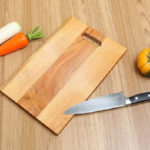According to Lương y đa khoa Bùi Đắc Sáng, Hanoi Traditional Medicine Association, to avoid health risks, housewives need to be careful when buying pork. Simply put, good pork is pork that is not fed with weight-gain feed, does not contain drug or chemical residues, and is free from parasites and bacteria.
In case housewives do not have an address to buy good pork and have to buy it from a street market, they should keep in mind a few tips to identify good meat as follows.

Good pork usually has a thick skin and thick fat. (Illustrative image)
Identifying pork with growth enhancers and lean meat agents
To distinguish between good pork and super lean pork due to chemicals, one can rely on sensory perception and cooking experience.


Identifying meat containing preservatives
For short-term profits, many suppliers turn spoiled meat into fresh-looking meat to sell to consumers. They marinate or soak the meat in borax, salt, or other chemicals that are difficult for consumers’ senses to detect.
When soaked in these chemicals, the meat will turn bright red but lose its natural stickiness, the meat grains will become tough and hard, and it will lose its elasticity.
In addition, when cut deep inside, the meat is quite soft, watery, and slightly bruised, with an unpleasant odor. This type of meat will turn pale when washed and have a very unpleasant fishy odor, and the fat will be yellow. When cooked, the broth will be cloudy, smelly, and the surface fat will form into small circles instead of a large scum like fresh meat.
Identifying meat infected with parasites
The most common parasite is pork infected with worms. Consumers need to observe carefully before buying, especially in fatty areas such as shoulder meat, leg meat, and head meat. If you see grains like sticky rice (larvae concentrated in clusters), do not buy it.
When slicing the meat, you can cut it along the longitudinal muscle fibers. If you see small white clusters between the muscle fibers, the meat bundle should be discarded immediately, and cooking should not continue as this food is already infected with worm cysts.
To choose good pork, you should consider the meat supply chain. Buying meat from grocery stores or supermarkets, where there is a reliable supply system, will ensure safety compared to buying from street markets or street vendors. If the origin cannot be determined, the meat should be blanched in boiling water before use.
Consuming poor-quality meat has negative effects on health, including food poisoning and the risk of contracting diseases caused by pork worm larvae, which can damage the liver and kidneys. Over time, the accumulation of these toxins increases the risk of developing serious illnesses.
According to VTC News
8 Common Mistakes People Make with Cutting Boards
Are you using your cutting board correctly? Many Vietnamese households rely on cutting boards in their kitchen, but not everyone knows how to use them properly, especially when it comes to wooden cutting boards. Check out these 8 mistakes to avoid when using a cutting board to ensure both hygiene and safety for everyone in your family.
Is Refrigerated Leftovers Linked to an Increased Risk of Cancer?
Dr. Lam Van Man, Head of Research, Development and Technology Transfer Department of the Institute of Safety Food, has warned of the risk of food poisoning when reheating leftovers from the refrigerator. But what should we be aware of when it comes to the possibility of these leftovers causing cancer? Here, we explore what the experts have to say on the matter and offer some tips for safe eating.
Preserving Leftover Food from the Tet Holiday
With the beginning of the Lunar New Year, many households are stocking up on food to celebrate the festive occasion. While keeping food in the refrigerator is convenient, it can also be harmful to users if not done correctly. We have compiled a few tips to help ensure food remains fresh and safe to consume during Tet.






































